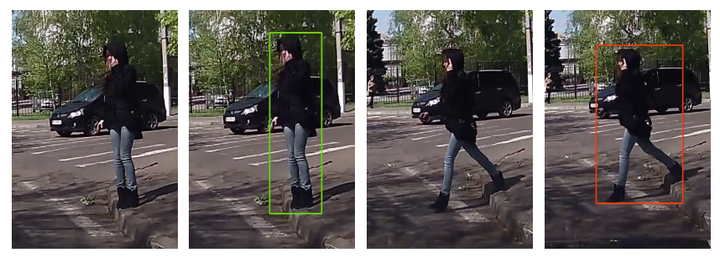Pedestrian Intention Prediction with Multi-Input Concatenation

Abstract
Responding safely to the pedestrians on the road is one of the critical challenges for autonomous vehicles. For smooth navigation of autonomous vehicles in urban environments, it is crucial to predict the pedestrians’ road crossing intention accurately and respond safely. Though motion analysis is a key feature for estimating future trajectories, it may be inconsistent for the small variable actions of humans. For reliable early prediction of the future trajectory of a pedestrian, visual pose and surrounding information are helpful. In this work, we propose a novel approach to determine the intention of a pedestrian by using pose, surrounding context, and bounding box information over a small duration of half a second (last 16 frames). We study the significance of different combinations of these features. We adopt 3D convolution networks, that have shown remarkable performance in activity recognition tasks. In our experiments using the popular pedestrian intention dataset, JAAD, the proposed method achieved over 84% accuracy in estimating the intention of a pedestrian to cross